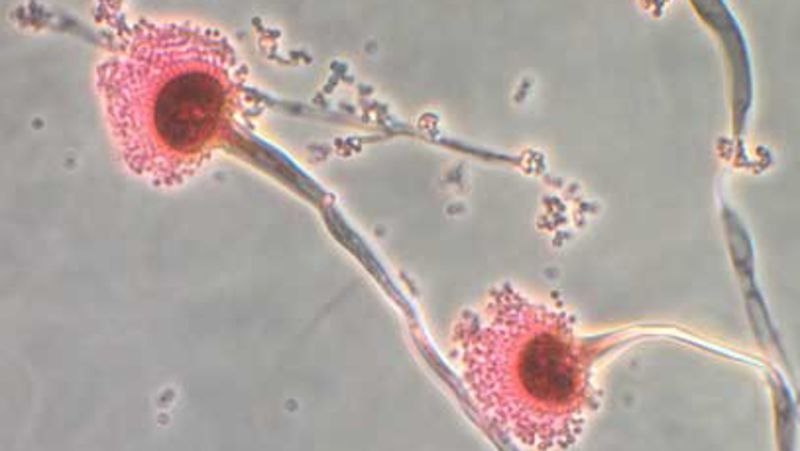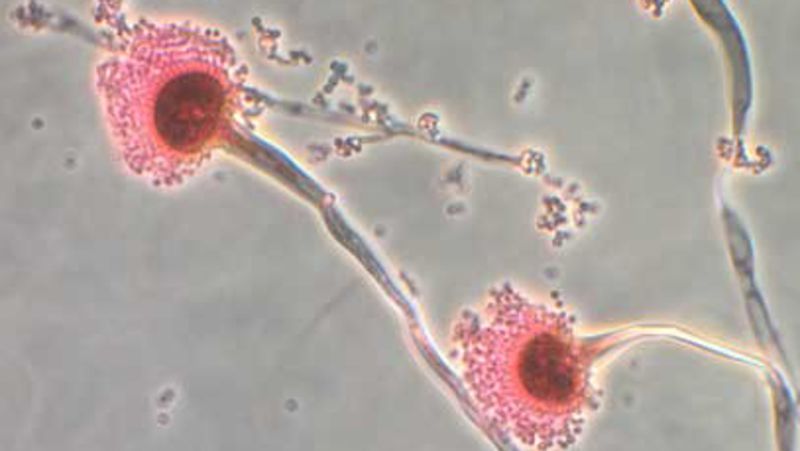Internal Fungal Infections: The Threat Of A Climate Change-Driven Epidemic

Welcome to your ultimate source for breaking news, trending updates, and in-depth stories from around the world. Whether it's politics, technology, entertainment, sports, or lifestyle, we bring you real-time updates that keep you informed and ahead of the curve.
Our team works tirelessly to ensure you never miss a moment. From the latest developments in global events to the most talked-about topics on social media, our news platform is designed to deliver accurate and timely information, all in one place.
Stay in the know and join thousands of readers who trust us for reliable, up-to-date content. Explore our expertly curated articles and dive deeper into the stories that matter to you. Visit Best Website now and be part of the conversation. Don't miss out on the headlines that shape our world!
Table of Contents
Internal Fungal Infections: The Threat of a Climate Change-Driven Epidemic
The world is facing a growing threat: a potential epidemic of internal fungal infections, fueled by the escalating climate crisis. While often overlooked, these infections are already claiming thousands of lives annually, and rising temperatures and extreme weather events are creating the perfect breeding ground for a surge in cases. This isn't a distant future prediction; it's a present danger requiring urgent attention and proactive solutions.
The Rising Threat of Invasive Fungal Diseases
Invasive fungal diseases (IFDs), unlike superficial fungal infections like athlete's foot, penetrate deep into the body, affecting vital organs and often proving fatal, particularly in immunocompromised individuals. These infections are notoriously difficult to treat, with limited effective antifungal drugs and increasing instances of drug resistance. Organisms like Candida auris, Aspergillus fumigatus, and Cryptococcus neoformans are already responsible for significant morbidity and mortality globally. But climate change is exacerbating the problem in several key ways:
Climate Change: The Perfect Storm for Fungal Growth
-
Increased Temperatures: Warmer temperatures expand the geographic range of many pathogenic fungi, allowing them to thrive in previously unsuitable environments. This increases exposure for a wider population.
-
Extreme Weather Events: Floods and hurricanes can create ideal conditions for fungal spores to spread, leading to outbreaks in previously unaffected areas. The disruption of healthcare infrastructure further complicates the situation, hindering timely diagnosis and treatment.
-
Changes in Humidity and Rainfall: Altered precipitation patterns can influence the growth and dispersal of fungal spores, leading to increased airborne concentrations and greater risk of infection.
-
Impact on Ecosystems: Climate change disrupts ecosystems, potentially increasing the interaction between humans and fungal pathogens. Changes in vegetation and animal populations can influence the spread and evolution of these fungi.
Who is Most at Risk?
While anyone can contract an IFD, certain groups are particularly vulnerable:
-
Immunocompromised individuals: People with HIV/AIDS, cancer patients undergoing chemotherapy, organ transplant recipients, and those with other conditions weakening their immune systems are at significantly higher risk.
-
Individuals with pre-existing respiratory conditions: People with asthma, COPD, or cystic fibrosis are more susceptible to respiratory fungal infections.
-
Healthcare workers: Healthcare settings can be breeding grounds for fungal infections, putting medical personnel at increased risk.
The Urgent Need for Action:
Combating this emerging threat requires a multi-pronged approach:
-
Improved Surveillance and Diagnostics: Enhanced monitoring systems are needed to track the spread of fungal pathogens and develop more rapid and accurate diagnostic tools.
-
Development of New Antifungal Drugs: Research into new and effective antifungal medications is crucial to combat drug resistance and improve treatment outcomes.
-
Climate Change Mitigation: Addressing climate change is fundamental to reducing the risk of fungal epidemics. Reducing greenhouse gas emissions is essential to slowing the expansion of fungal habitats.
-
Public Health Education: Raising public awareness about the risks of IFDs and promoting preventative measures is vital.
Conclusion:
The looming threat of climate change-driven fungal epidemics is not just a hypothetical scenario. The evidence is clear: rising temperatures and extreme weather are creating the perfect conditions for a surge in invasive fungal infections. A collaborative global effort, encompassing research, surveillance, and climate action, is urgently needed to prevent a devastating public health crisis. We must act now to protect vulnerable populations and safeguard global health. Learn more about fungal infections and how to protect yourself by visiting the .

Thank you for visiting our website, your trusted source for the latest updates and in-depth coverage on Internal Fungal Infections: The Threat Of A Climate Change-Driven Epidemic. We're committed to keeping you informed with timely and accurate information to meet your curiosity and needs.
If you have any questions, suggestions, or feedback, we'd love to hear from you. Your insights are valuable to us and help us improve to serve you better. Feel free to reach out through our contact page.
Don't forget to bookmark our website and check back regularly for the latest headlines and trending topics. See you next time, and thank you for being part of our growing community!
Featured Posts
-
 Emerging Fungal Threat Rising Temperatures Fuel Internal Infections
May 27, 2025
Emerging Fungal Threat Rising Temperatures Fuel Internal Infections
May 27, 2025 -
 Serious Hot Air Balloon Accident In Mexico 12 Injured
May 27, 2025
Serious Hot Air Balloon Accident In Mexico 12 Injured
May 27, 2025 -
 Jersey Shore Boardwalk Closure 73 Arrested 21 Juveniles Among Detainees
May 27, 2025
Jersey Shore Boardwalk Closure 73 Arrested 21 Juveniles Among Detainees
May 27, 2025 -
 Their Dc Love Story A Journey From Afar Ended Too Soon
May 27, 2025
Their Dc Love Story A Journey From Afar Ended Too Soon
May 27, 2025 -
 Four Arrested In North Korea Over Failed Warship Launch Images Surface
May 27, 2025
Four Arrested In North Korea Over Failed Warship Launch Images Surface
May 27, 2025
Latest Posts
-
 Kid Cudi Death Threat Allegation Key Testimony In Sean Combs Trial
May 30, 2025
Kid Cudi Death Threat Allegation Key Testimony In Sean Combs Trial
May 30, 2025 -
 Palestinian Child Casualties Soar To 1300 Ambassadors Emotional Appeal
May 30, 2025
Palestinian Child Casualties Soar To 1300 Ambassadors Emotional Appeal
May 30, 2025 -
 Jaume Munar Vs Arthur Fils Analyzing The Second Round Clash At Roland Garros 2025
May 30, 2025
Jaume Munar Vs Arthur Fils Analyzing The Second Round Clash At Roland Garros 2025
May 30, 2025 -
 From Daytime Domination To Cancellation The Rise And Fall Of The Ellen De Generes Show
May 30, 2025
From Daytime Domination To Cancellation The Rise And Fall Of The Ellen De Generes Show
May 30, 2025 -
 Wednesday Weather Warning Heavy Downpours And Thunderstorms To Hit The Dmv Region
May 30, 2025
Wednesday Weather Warning Heavy Downpours And Thunderstorms To Hit The Dmv Region
May 30, 2025
